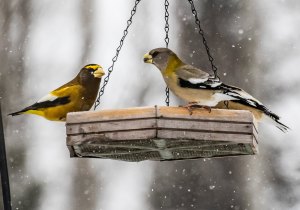Discover stories in Conservation Science
The Sound of Merlin: Like Shazam, but for Birds
Just like Shazam helps identify songs, the Merlin App does the same for birds, but for cedar wax wings and ovenbirds instead of 80s Hair Bands
Do You Know the World’s Weirdest Wild Pigs?
Think you know pigs? Check out these wonderful, wild swine.
Planting Trees in Pasturelands Keeps Things Cool
Farmers in the tropics can harness the cooling benefits of tree cover by incorporating trees within their pasturelands.
Oyster Hatcheries Help the Industry Adapt to Climate Change
How can the shellfish industry adapt to the challenges posed by climate change?
Big Gulp: Blue Catfish Eats Wood Duck
Blue catfish will eat just about anything. Including a duck.
Conservation-Friendly Farming Can Benefit Both Birds and Crops
Is farming in harmony with conservation efforts increasing the benefits or risks from birds?
Savanna Fire Management Can Fund Africa’s Protected Areas
A new study finds that fire management on Africa’s savannas can generate enough carbon revenue to help fill the funding gap for protected areas.
Edward O. Wilson, Science Communicator
Remembering Edward O. Wilson, one of our best science communicators.
See Something Weird at the Bird Feeder? It’s Not Just You
Did you just see a weird bird at the feeder? You’re not alone.
How Hyenas Sanitize The City
In an Ethiopian city, spotted hyenas provide the garbage disposal.
Tropical Deforestation May Reduce Safe Work for Millions
Deforestation reduced safe work hours for more than 4.9 million people across the tropics.
Can Offshore Wind Development Enhance Fish Habitat?
In addition to providing clean energy, a new report demonstrates that wind turbines can also enhance fish and marine life habitat by incorporating nature-based design principles.











